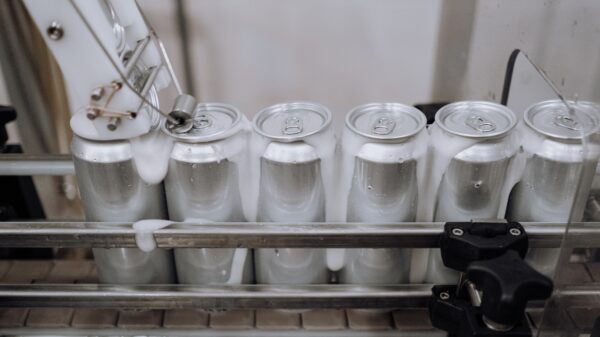
Welcome to the future! Automation has become an inseparable part of our daily lives, revolutionizing industries and transforming the way we work. From self-driving cars to smart homes, it’s apparent that technology is advancing at a rapid pace. But what exactly is automation? And how does it impact various sectors? In this blog post, we will dive into the world of automation, exploring its definition, types, and shedding light on its potential benefits and challenges. So buckle up and get ready to uncover the secrets behind this game-changing phenomenon that is shaping our present and defining our future!
Introduction to Automation
Automation has been around for centuries, but it’s only recently that it’s become an integral part of manufacturing and other industries. Automation is the use of machines, control systems and information technologies to reduce the need for human intervention in a process. In manufacturing, automation is used to increase productivity and quality while reducing costs.
There are different types of automation, but all aim to achieve the same goal: to make a process easier or more efficient. The most common types of automation are robotic automation, process automation and software automation.
Robotic automation involves the use of robots to carry out tasks that would otherwise be carried out by human workers. This type of automation is often used in manufacturing processes where robots are used to assemble products or carry out other repetitive tasks.
Process automation is the use of technology to automate manual or repetitive tasks in a process. This could involve anything from using sensors to monitor a process and make adjustments automatically, to using software to automate data entry into a system.
Software automation is the use of software programs to automate tasks that would otherwise be performed manually. This could include anything from creating automatic backups of files to sending out email reminders for upcoming events.
What is Automation?
Automation is the process of using technology to complete a task or series of tasks with little or no human intervention. There are many different types of automation, but they all share one common goal: to make our lives easier by taking care of tasks that would otherwise be done by hand.

One of the most popular examples of automation is the use of robots in manufacturing. Robots are capable of performing repetitive tasks quickly and accurately, freeing up workers to focus on other aspects of production. Automation can also be used in logistics and transportation, as well as customer service and support.
While automation can save time and improve efficiency, it’s important to remember that it doesn’t come without its challenges. For instance, automating a task that is already being done manually can result in disruptions to workflow and may require retraining for employees. Additionally, there is always the potential for technology failures which can lead to delays or even complete shutdowns.
Despite these challenges, automation is an essential part of modern life and will only become more prevalent in the years to come. As we continue to find new ways to use technology, the possibilities for automation are endless.
Types of Automation
Automation comes in various forms and levels of sophistication. The most basic form of automation is a simple mechanical device, such as a light switch or door opener, that performs a task with little or no human intervention. More complex forms of automation may use sensors to detect conditions and trigger responses accordingly.
Basic automation systems are often used in manufacturing and production environments to improve efficiency and quality. Automated machines can perform repetitive tasks more quickly and accurately than human workers, freeing up time for other tasks. Automated systems can also be used to monitor conditions and make adjustments as needed to optimize performance.
More advanced automation systems may use artificial intelligence (AI) technologies to learn from data and make predictions or decisions. AI-powered automation systems can identify patterns and trends, make recommendations, and take actions based on their findings. These systems are becoming increasingly common in business settings as organizations seek to gain a competitive edge through the use of data-driven insights.
Benefits of Automation
There are many benefits of automation, including:
1. Increased productivity and efficiency: Automation can help businesses increase their productivity and efficiency by automating tasks that would otherwise be completed manually. This can free up employees to focus on more important tasks, and can help businesses complete tasks more quickly and accurately.
2. Cost savings: Automation can also help businesses save money by reducing the need for manual labor. In addition, automated systems can often work faster and more accurately than humans, which can lead to reduced mistakes and cost savings.
3. Improved customer satisfaction: Automation can also help businesses improve their customer satisfaction levels by providing faster service and more accurate results. Automated systems can often provide customers with the information they need more quickly and efficiently than human employees, leading to happier customers.
Challenges of Automation
While automation can streamline many business processes and improve efficiencies, there are also challenges that come with implementing automation solutions. One challenge is the high initial investment cost for implementing automation technologies. Another challenge is the potential for job loss as automated systems take over certain tasks formerly performed by human workers. There is also the risk of system failures or glitches which can disrupt business operations. And finally, there is the need for ongoing maintenance and support for automated systems which can be costly and time-consuming.
Examples of Automation in Different Industries
Different industries are beginning to utilize automation in different ways. Here are some examples:
In the food and beverage industry, automation is often used in production line settings. This helps to ensure that products are consistently made to the same high standards.
In the automotive industry, robots are increasingly being used in manufacturing processes. This helps to speed up production and improve quality control.
In the healthcare industry, automating administrative tasks can free up time for nurses and doctors to focus on patient care. For example, electronic medical records systems can help to streamline data entry and reduce paperwork.
Conclusion
Automation is a powerful tool that can help businesses increase efficiency, reduce costs and improve customer satisfaction. It comes in many different forms, including robotic process automation, machine learning and artificial intelligence. By understanding the various types of automation available as well as their advantages and disadvantages, you can make informed decisions about which type best suits your needs. With the right approach to automation, businesses can reap huge rewards – from increased productivity to improved accuracy – while avoiding potential pitfalls like security risks or job losses due to automation.







